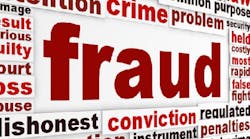For the 28.9% of professionals polled whose organizations experienced supply chain fraud, waste or abuse during the past 12 months, employees (22.9%) were the top source of supply chain fraud.
Vendors were the culprit 17.4% of the time and other third parties, which would include subcontractors and their vendor , accounted for 20.1% of the fraud.
"Since every supply chain’s unique risk profile stems from a mix of cultures, geographies, industries and subcontractors, developing an effective supply chain forensics program is often more art thanscience,” said Mark Pearson, principal, Deloitte Financial Advisory Services LLP, who conducted the survey.
“But, if you know where to look, red flags and other faint signals can help you focus limited resources to drive supply chain transparency and efficiency while reducing fraud, waste and abuse risks,” Pearson added.
Yet with all of this fraud occurring 26.8% of those polled have no program currently in place to prevent and detect those risks
“When we ask executives overseeing supply chains why fraud risk management isn’t more top of mind, we’re consistently told that compliance resource constraints are to blame,” said Larry Kivett, partner, Deloitte Financial Advisory Services LLP.
“With reputational, litigation and regulatory repercussions hanging in the balance, companies can’t afford to dismiss supply chain fraud prevention and detection. Schemes constantly evolve and come from every direction, making vigilance crucial,” Kivett added.
About two-thirds (65.3%) of respondents reported their company conducts at least some due diligence on their third parties. Nearly half as many (29%) evaluate the supply chain fraud risks that third parties present on an annual or more frequent basis.
Warning signs for supply chain fraud, waste and abuse can include:
- Bidding/procurement processes that are not robust or independent
- Lack of sufficient clarity in third-party invoice details
- Poor or strained relationships with certain third parties Infrequent or non-existent “right-to-audit” assessments of suppliers and licensees
- Little-to-no oversight into proper administration of agreements with third parties
- Use of third party agreements that are sole-sourced without a clear explanation or are constructed as cost-plus agreements without clear definitions of cost and other relevant term.
Pearson continued, “Don’t fall into the ‘it can’t happen at my company’ trap. Forces outside your company aren’t always to blame. Employees often leverage transactions involving vendors and third parties to their own benefit via supply chain fraud – and when collusion is involved, detection and prevention is quite difficult.”



